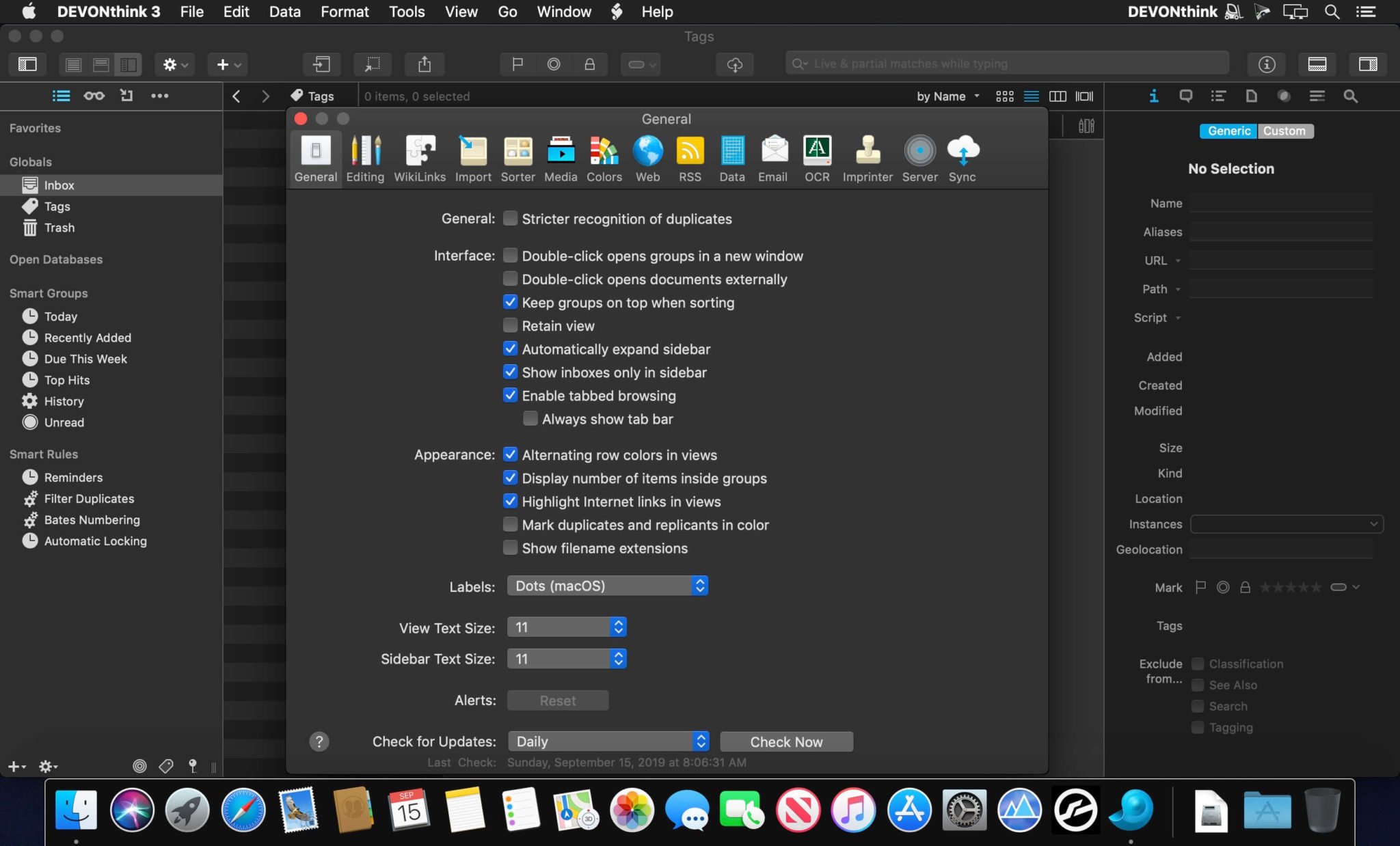


Only very basic operations can be done on such tables (like sorting), although some more advanced function (like simple computations) is available through scripts. Tablesīesides rich text, pdf, image files etc, a nice feature of DevonThink is the possibility to define tables (also called sheets) that consist of an arbitrary number of columns and rows (also called records). Of course, links to web pages can also be added, and web pages can be seen directly from within DevonThink or with your favourite web browser.
#Devonthink pro office database pdf#
Pdf and image files can of course be stored (and viewed) independently, not embedded into any text file, and web pages can be rendered with the same engine used by Safari (WebKit):Īlthough not powerful as the anchors used in HTML, DevonThink offers a system for linking files together links point to another file in the database (it seems there’s no way to point to a specific location into a given file), and are displayed in the usual style and colour: Drag-and-drop of pictures and graphs from data analysis applications like pro Fit works like a charm, and is very handy for keeping electronic journals of lab activity: Rich text files are a powerful way to take notes and organize ideas, since you can type formatted text, include graphics, images, links, movies, pdf files (viewed in-line):Įquations can be simply added by drag-and-drop or copy-paste from tools like MathMagic or typeset into DevonThink from LaTeX by tools like EquationService, LaTeXiT and TeX FoG. DevonThink can accept (by drag-and-drop, for example) any kind of file, although only those of a format that it recognizes can be viewed in-line (the others are shown with their icon and are opened with their associated application) and new files can be created into the database, mostly plain text or rich text files. If folders are just containers, files are richer than what you usually expect. Files and folders can be created from within DevonThink, and in this case they are stored into one database and never show up in the Finder, but can also be real files and folders added to DevonThink’s virtual file structure by a simple drag-and-drop from the Finder. Here you can choose among many different views, resembling those of the Finder (icon, list and column) or those of most e-mail applications (with two or three panes):įiles and folders can be assigned a coloured label, and can be organized in deep hierarchies. Databases are collections of “files” and “folders”: I quoted the two words, because you won’t see them as conventional files and folders on your hard disk, but they are viewed as such in DevonThink’s main window. In the following screenshots, the application and its interface are in English (localization is available also in German, French and Danish), but contents are usually in Italian: I hope you apologize me, but I wanted to show you DevonThink Pro in real-life applications.ĭevonThink organizes your data into one or more databases, stored in your ~/Library/Application Support/DEVONthink Pro folder, that can be automatically backed up from hourly to monthly. I’m going to review version 1.1.1 of DevonThink Pro.
#Devonthink pro office database upgrade#
An easy upgrade path is available from the Personal to the Professional version, by just paying the difference. This is the field where DevonThink aims at helping users.Īvailable in two flavours, Personal (€ 33.57 or USD 39.95 + taxes) and Professional (€ 67.18 or USD 79.95 + taxes), both of them already compiled as Universal Binaries, we’ll discuss here of the Professional version only, since it’s the most feature complete. That’s why applications that help organizing data and files, keeping track of ideas and notes, and cross-link resources of different kind are always much appreciated by scientists. The ways all these files are interconnected are usually complex and cannot be easily reflected into the hierarchical structure we give to our folders on our disks. Each day, a researcher has to deal with a lot of data in different formats coming from different sources: measurements, graphs, papers, reviews, web pages, notes, laboratory journals, tables, schemes, pictures etc.


 0 kommentar(er)
0 kommentar(er)
